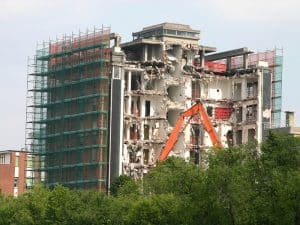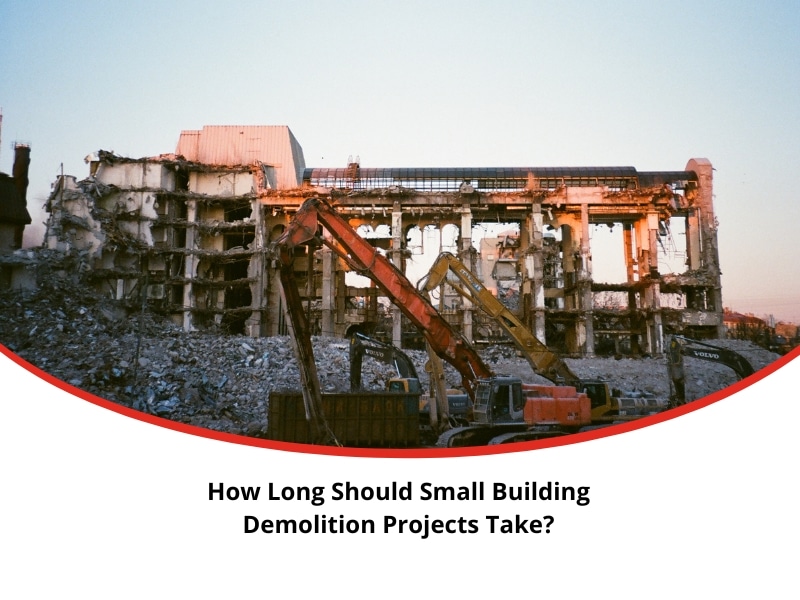Knocking down a small structure might sound quick and simple, but demolition timelines can often catch even seasoned pros off guard. Whether you’re clearing an old garage or dismantling a commercial outbuilding, knowing how long the job should take helps you plan properly, avoid cost overruns, and keep trades on schedule. Every site brings its own curveballs, and even modest projects can drag on if overlooked variables come into play.
This blog unpacks the typical timeframes for small building demolition and what really drives those numbers. You’ll understand why one site gets cleared in a day while another runs a week behind. If you’re working to a tight deadline or coordinating multiple trades, this guide helps you factor in the realities of small-scale demolition. By the end, you’ll be better placed to set realistic schedules and know what levers to pull when time is tight.
What causes delays in small building demolition projects?
Demolition delays often start with misjudged site conditions. One buried septic tank or unexpected asbestos find can stop work in its tracks. Common causes include:
- Incomplete or inaccurate site surveys
- Delays in permits or council approvals
- Utility disconnection issues (especially gas and electrical)
- Poor weather conditions, especially in winter
- Unplanned waste removal or hazardous material handling
Sometimes, delays aren’t caused by the site at all. Poor coordination between contractors, miscommunication about scope, or missing documentation can be just as disruptive. When teams overlook prep work, jobs that should be straightforward can quickly blow out.
You can sidestep many of these issues by reviewing your demolition approach with a trusted provider. This upfront planning often saves days down the track.
How does the structure size impact overall demolition time?
Size matters — but not always in the way you’d think. A slightly bigger shed doesn’t automatically take twice the time to knock down. Timeframes typically shift based on the following:
- Building materials (brick and concrete slow things down)
- Structural integrity (weaker structures fall faster but less safely)
- Access to machinery and trucks
- Proximity to other structures (tight spaces limit equipment)
A freestanding timber granny flat might come down in under a day. But a double-brick office unit joined to neighbouring walls could need three or four days. Tight urban blocks often extend work by several days, purely due to logistics. For more nuanced breakdowns, especially when pricing jobs, it’s worth exploring how cost factors in light building demolition vary between different sites and suburbs.
Why timing matters in small building demolition work
Blowing deadlines isn’t just frustrating — it’s expensive. Demolition delays ripple through entire construction schedules, impacting budgeting, safety, and even compliance. Here are the key impacts of poor timing:
- Idle equipment and labour charges
- Booking delays for follow-on trades
- Temporary fencing or waste bin hire extensions
- Missed planning milestones

In some cases, slow demolition work can breach contractual obligations or development applications. Local councils may also enforce strict noise or work-hour limits. Pushing timelines beyond approved windows can cause fines or permit breaches. If you’re unsure what to clear before demolition starts, reviewing and understanding site preparation for demolition can help align your team early.
What factors help speed up demolition timelines?
Plenty of things can tip the scale in your favour. Strong planning and the right kit make light work of even stubborn structures. Demolition runs faster when you:
- Use appropriate machinery (e.g., excavators with grabbers or pulverisers)
- Have all approvals and utilities cleared beforehand
- Schedule waste disposal pickups in advance
- Mark out hazardous zones early
Tight sequencing of tasks is another winner. For example, separating soft strip-out from structural demo lets smaller crews prep in parallel. And don’t underestimate how much clear site access speeds things up — fewer hours reversing trucks equals more time demolishing.
Below is a rough guide to time expectations based on building type and access:
Structure Type | Estimated Duration | Key Time Factors |
Timber shed (freestanding) | 1 day | Access, material, waste volume |
Brick garage (urban block) | 2–3 days | Wall thickness, traffic control |
Small office unit (shared walls) | 3–5 days | Neighbour proximity permits |
Light commercial workshop | 4–6 days | Roof span, internal strip-out |
Can project management improve small building demolition?
Absolutely — and often more than equipment choice alone. A switched-on project manager streamlines the process from start to finish. Effective management brings:
- Better sequencing of prep, strip-out, and teardown
- Coordinated subcontractors and waste disposal
- Faster resolution of site issues
- Fewer start-stop cycles across teams
It also helps flag bottlenecks before they become problems. For instance, if a required permit hasn’t come through, a good manager shifts the work plan rather than halting the whole crew. Poor coordination is one of the biggest hidden time drains, especially on smaller sites where every hour counts. If you’re leading your own project, anticipate hiccups early by cross-checking your schedule with local construction and demolition waste compliance requirements.
What should teams prepare before starting demolition?
Being ready on day one often saves hours — sometimes even days — across the job. Good prep work sets the rhythm. Before work begins:
- Confirm all service disconnections with utility providers
- Clear the site of non-structural contents
- Lock in equipment, bins, and haulage
- Notify neighbours and update the council if needed
- Review risk assessments and site-specific safety plans

You’ll also want to double-check access points and staging areas for materials or debris. Unorganised storage can choke a worksite fast. If you’re unsure where to start, comparing project plans with experienced operators helps. For practical tips, it’s smart to run through cost-effective strategies for small building demolition early in the planning phase.
Final thoughts on scheduling your small building demolition
No two sites are exactly alike, but the same truths keep cropping up — better prep means faster work. Rushing in without a clear plan tends to cost more in time and dollars than it saves. Whether you’re working to a DA timeline or juggling trades across sites, building in a realistic demolition schedule helps things run on time.
Timing slips can feel minor in isolation, but on tight builds, they throw the whole schedule sideways. Don’t bank on best-case scenarios — instead, base your plan on structure type, site access, and material removal requirements.
If you’re still weighing timelines or facing site complications, it might help to get professional advice from Watson Demolition & Site Services before locking things in.

